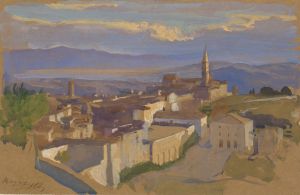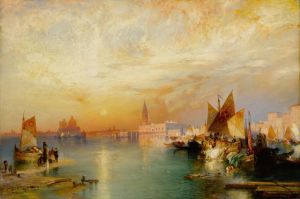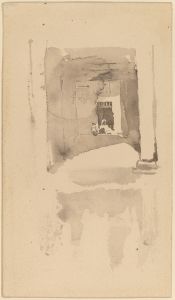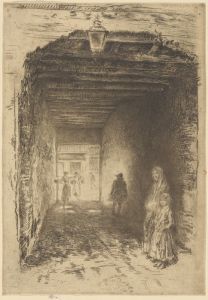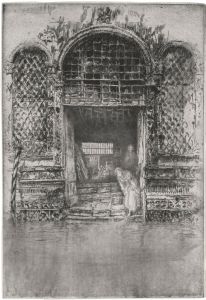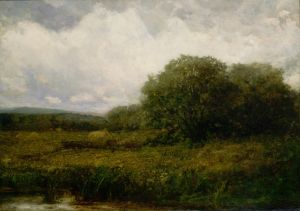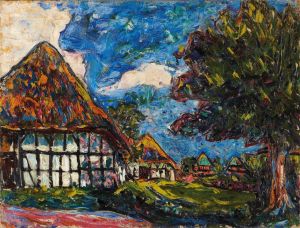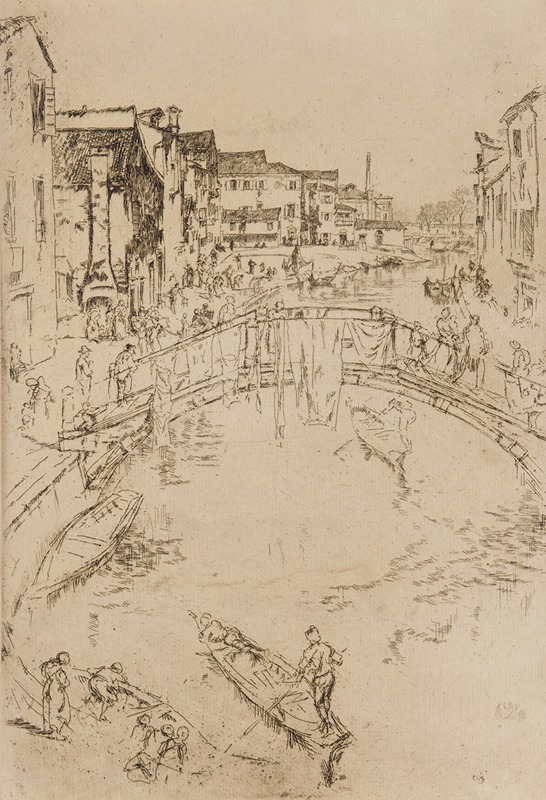
The Bridge, Santa Marta
A hand-painted replica of James Abbott McNeill Whistler’s masterpiece The Bridge, Santa Marta, meticulously crafted by professional artists to capture the true essence of the original. Each piece is created with museum-quality canvas and rare mineral pigments, carefully painted by experienced artists with delicate brushstrokes and rich, layered colors to perfectly recreate the texture of the original artwork. Unlike machine-printed reproductions, this hand-painted version brings the painting to life, infused with the artist’s emotions and skill in every stroke. Whether for personal collection or home decoration, it instantly elevates the artistic atmosphere of any space.
"The Bridge, Santa Marta" is a painting by the American-born artist James Abbott McNeill Whistler, who is renowned for his contributions to the art world during the late 19th century. Whistler was a pivotal figure in the Aesthetic Movement, which emphasized the visual and sensual qualities of art and design over practical, moral, or narrative considerations. His works often focused on mood and atmosphere, employing a subtle palette and innovative compositions.
James Abbott McNeill Whistler was born on July 11, 1834, in Lowell, Massachusetts, and spent much of his career in Europe, particularly in London and Paris. He was known for his distinctive style, which combined elements of realism and impressionism. Whistler's approach to art was heavily influenced by his belief in "art for art's sake," a philosophy that advocated for the intrinsic value of art, independent of any didactic, moral, or utilitarian function.
"The Bridge, Santa Marta" is one of Whistler's many works that capture the essence of a specific location with a focus on atmosphere and mood. While specific details about the creation and history of this particular painting are limited, it is consistent with Whistler's broader body of work, which often depicted urban and natural landscapes with an emphasis on harmony and tonal balance.
Whistler's technique often involved the use of a limited color palette and a focus on the interplay of light and shadow. This approach can be seen in "The Bridge, Santa Marta," where Whistler likely employed his signature style to convey the tranquility and subtle beauty of the scene. His works are characterized by their delicate brushwork and a keen attention to the effects of light, which create a sense of depth and atmosphere.
Throughout his career, Whistler was known for his innovative approach to composition and his ability to capture the fleeting effects of light and weather. His paintings often evoke a sense of calm and introspection, inviting viewers to appreciate the beauty of the everyday world. Whistler's influence extended beyond his own work, as he played a significant role in shaping the direction of modern art through his advocacy for aesthetic principles and his mentorship of younger artists.
While "The Bridge, Santa Marta" may not be as widely recognized as some of Whistler's other works, such as "Arrangement in Grey and Black No. 1" (commonly known as "Whistler's Mother"), it remains an example of his skill in capturing the essence of a place through his unique artistic vision. Whistler's legacy continues to be celebrated for its contribution to the development of modern art and his ability to convey the beauty of the world through his paintings.
In summary, "The Bridge, Santa Marta" exemplifies James Abbott McNeill Whistler's artistic philosophy and style, characterized by a focus on mood, atmosphere, and the intrinsic beauty of the scene. While specific historical details about this painting are scarce, it remains a testament to Whistler's enduring influence on the art world.





